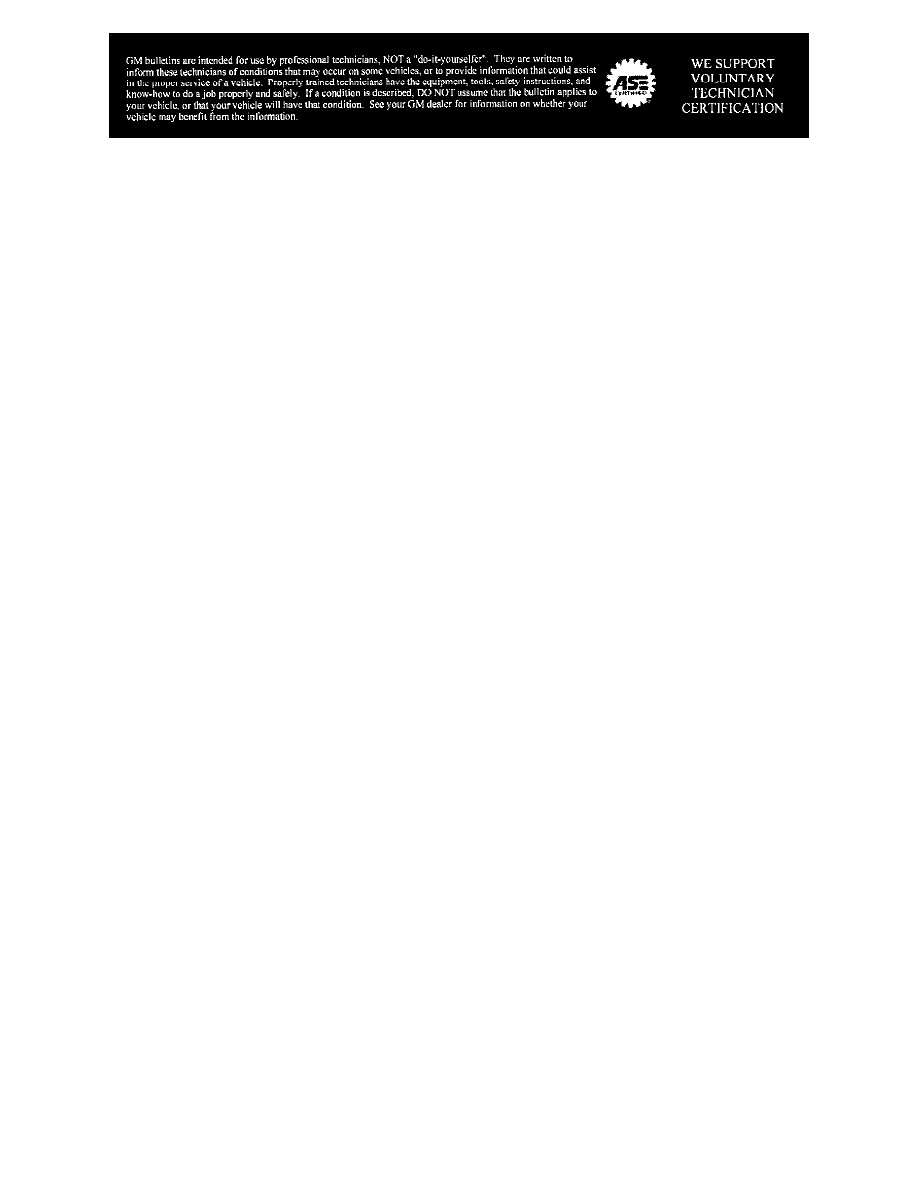Malibu L4-2.2L VIN F (2005)

Disclaimer
Technical Service Bulletin # 04-03-06-001
Date: 040910
Steering/Suspension - Vehicle Pull/Lead Diagnosis
Bulletin No.: 04-03-06-001
Date: September 10, 2004
INFORMATION
Subject:
Vehicle Leads/Pulls Characteristics and Diagnosis
Models:
2004-2005 Chevrolet Malibu and Malibu MAXX
Lead/Pull Description
At a constant highway speed on a typical straight road, lead/pull is the amount of effort required at the steering wheel to maintain the vehicle's straight
path.
Lead/pull is usually caused by the following factors:
^
Tire construction
Variability in the tire construction may produce lead/pull. The rear tires will not cause lead/pull.
^
Wheel alignment
^
Brake Drag
^
Unbalanced steering gear
Visual/Physical Inspection
^
Inspect for aftermarket devices which could affect the operation of any of the suspension sub-systems.
^
Inspect the easily accessible or visible system components for obvious damage or conditions which could cause the symptom.
^
Inspect for proper tire size and inflation pressure.
^
Inspect for abnormal tire wear.
Vehicle Leads/Pulls Alignment Diagnosis and Repair
Front cross-caster and front cross-camber are the only wheel alignment parameters that influence lead or pull.
If the vehicle leads/pulls to the left after performing the steps listed in SI Document ID, and the front wheel alignment parameters are found to be in
specification, adjust the front left and/or right camber to achieve a cross-camber of -0.50° to -0.75°. Refer to Front Camber Adjustment, SI Document.
The cross-camber is the difference between the left side camber and the right side camber (cross-camber = LH camber-RH camber). Positive
cross-camber may cause the vehicle to pull to the left. For example: If the vehicle pulls to the left, adjust the cross-camber more negative and vice-versa.
Steering Position and Torque Sensor Calibration
Important:
ONLY perform the steering position sensor and torque sensor recalibration procedure after the tires, suspension and alignment specifications have
been inspected and/or corrected and the vehicle still exhibits a lead or pull condition. Failure to do so may result in additional customer lead and or
pull concerns.
